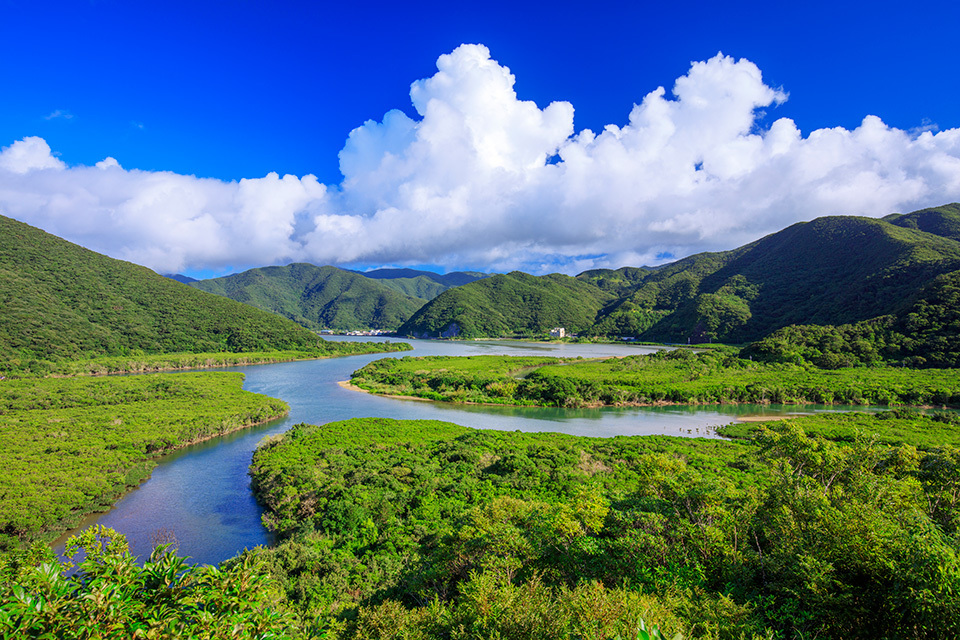As of July 26 this year, a new site in Japan has been added to UNESCO’s World Heritage List. The islands inscribed as Japan’s fifth World Natural Heritage site support a diverse array of life that has evolved along a unique path within timeless forests.


The vast virgin mangrove forest on Amami-Oshima Island. People can enjoy activities such as canoeing in the forest.
The Ryukyu Islands are located at the southern end of the Japanese Archipelago, which arches from the northeast down to the southwest, covering a wide range of climate zones. Japan is already one of the world’s invaluable biodiversity hotspots, but these islands are particularly known for that trait. The region, which is influenced by the warm Kuroshio Current and subtropical high-pressure systems, is warm and humid year-round. Evergreen broadleaved subtropical rainforests stretch across the islands. With a thick growth of giant trees, stepping into the rainforests feels like entering the age of the dinosaurs.
The islands’ magnificent trees are treasure troves of biodiversity. Because of their unique biota, which includes numerous rare endemic and threatened species, “Amami-Oshima Island, Tokunoshima Island, Northern part of Okinawa Island, and Iriomote Island” have been inscribed as UNESCO World Natural Heritage site as of July 26, 2021.

Iriomote Island has incredible undulating terrain. The many forest waterfalls of varying size create impressive scenery.
The islands were created millions of years ago when they split from the Eurasian continent. Over the long intervening years, the life here has evolved along its own path. The result is that the islands, which account for only 0.5% of Japan’s total land area, are home to an incredibly large share of the plant and animal species that inhabit the country. For example, one can see over 60% of Japan’s entire range of bird species on these islands.
The isolated environment on the islands has also led to the evolution of numerous unique species. There are nearly 2,000 such species, including over 1,600 insects and 71 vertebrates. Also, over 80% of the frogs and other amphibians inhabiting the islands are found nowhere else. Furthermore, 144 of the islands’ plants and animals are on the International Union for Conservation of Nature (IUCN) Red List of Threatened Species, which is 40% of all such species in Japan. The islands originally separated from the continent around 12 to 2 million years ago, and some of the species still retain their original appearance. A notable example is the Amami rabbit with its short ears and legs, which is one of the world’s oldest rabbit species.

Some of the unique species on the islands. From top left to bottom right: Iriomote cat, Ryukyu black-breasted leaf turtle, Iriomote locust, Okinawa rail, Amami rabbit.
Local governments and residents have joined together to safeguard those rare species as part of continuing efforts toward environmental protection and biotic conservation. Their initiatives to protect irreplaceable nature will be widely publicized through the Fifteenth meeting of the Conference of the Parties (COP 15) to the Convention on Biological Diversity (CBD) summit, scheduled for this October, and will drive the global trend toward a sustainable planet in the future.
Read about another site also newly added to the World Heritage list.

New World Heritage Sites Highlight the Charm of the Prehistoric Jomon Period


